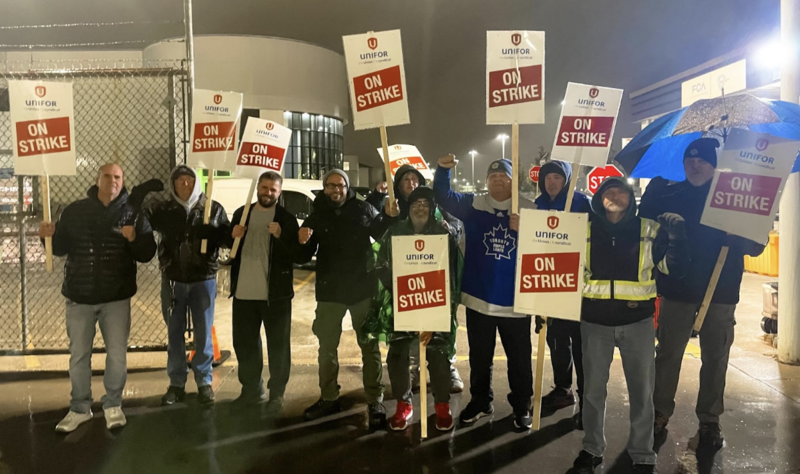Stellantis executives looked around, saw the numerous drawn-out strikes that have happened this year, and told striking workers, “Let’s get this over with.”
What happened: Stellantis became the last of the Big Three automakers (alongside Ford and GM) to reach a tentative new deal with its employees, repped by Unifor, after a strike that was so short some workers wouldn’t have even gotten the chance to hit the picket line.
-
The deal covers ~8,200 workers, which, per Unifor, represent the largest production footprint in the country (and are making cars under brands like Dodge and Jeep).
- The deal secures 20-25% wage bumps over three years, a better pension, a cost of living stipend, and two new paid holidays — the same as recent Ford and GM deals.
And that’s not all…
-
Unifor is on a hot streak, also securing a tentative deal for St. Lawrence Seaway workers late Sunday, ending an eight-day strike that disrupted supply chains.
-
The simultaneous autoworker strike south of the border also ended yesterday after GM reached a tentative deal with its workers after six weeks of negotiations.
Why it matters: Striking workers have secured impressive gains — gains that likely won’t be seen elsewhere in the labour market as conditions start to shift out of favour for employees.
-
A survey of over 500 Canadian companies across 15 sectors found that most are planning more modest pay increases next year due to economic uncertainties.
-
Meanwhile, new Conference Board of Canada data suggests that finding workers is getting easier and that wage growth, which ran hot earlier this year, is slowing.
Bottom line: Canadian unionization rates are down since the ‘80s and stood at 29% last year. While the strike surge might not lead to increased union interest, wage wins that continue amidst a cost-of-living crisis could, at least, cause some serious FOMO.—QH
